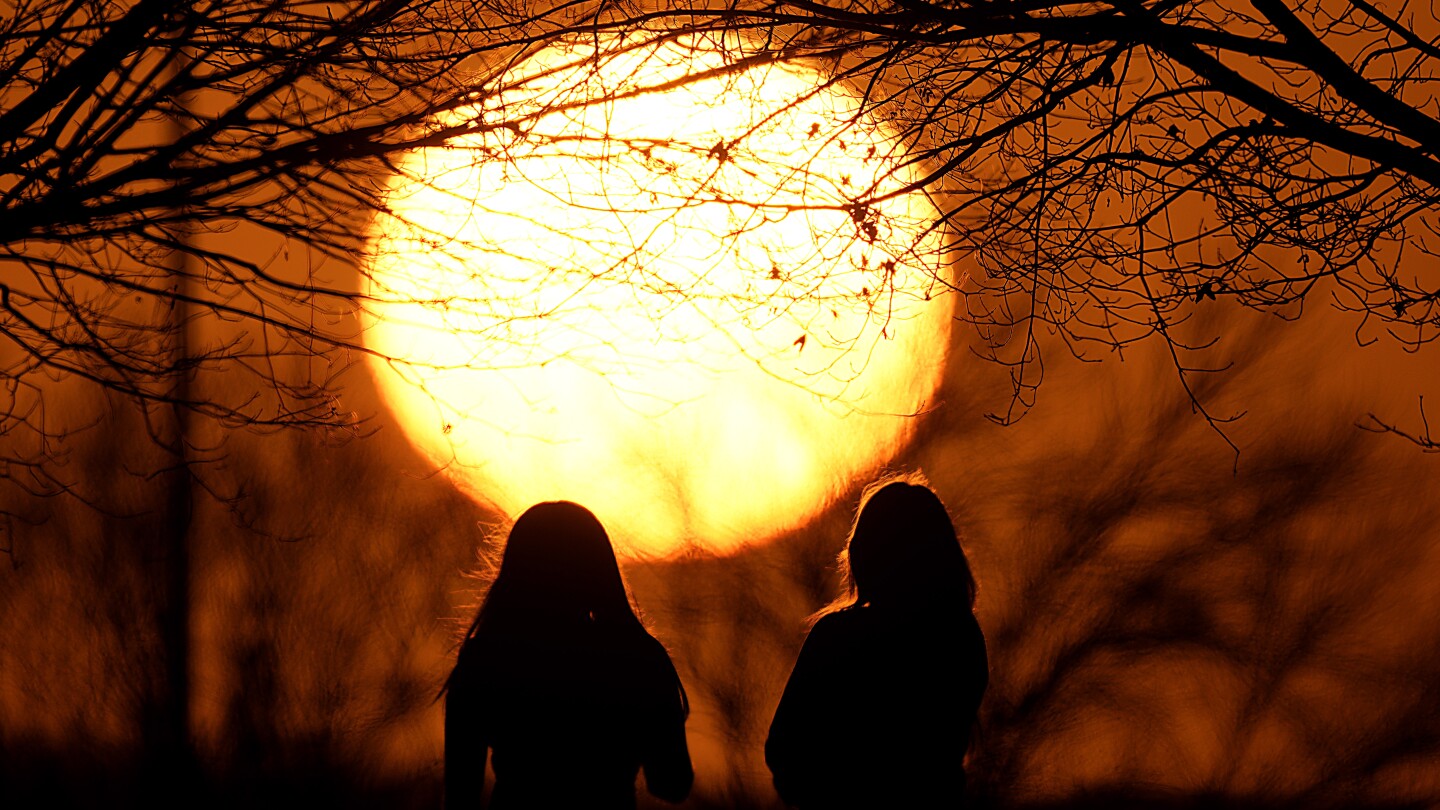BOSTON (AP) — A powerful winter storm has started dumping snow that could reach several feet in higher elevations of the West on Monday while much of the central U.S. was basking in unseasonably warm conditions. Windy conditions have raised the potential for fires in several states.
The National Weather Service warned that travel could be dangerous later Monday across parts of the Oregon Cascades and Northern Rockies, predicting near-blizzard conditions with one to two inches of snow an hour and winds reaching upwards of 65 mph (104 kph).
The storm will move into the Great Basin and Central Rockies Tuesday, carrying much colder temperatures and strong winds across the inner mountain West, said Andrew Orrison, a meteorologist with the National Weather Service in College Park, Maryland.
“We’ll be very wintry like for the next two days,” he added.
AP AUDIO: Wild weather’s coming: West readies for snow as Midwest gets a taste of summer.
In an AP interview, National Weather Service meteorologist Andrew Orrison says severe weather will move through the mid-Mississippi Valley and continue into portions of the Great Lakes.
The West is just one place with unusual, and in some cases, dangerous weather conditions. Here is what to expect elsewhere.
IT’S WARM IN THE HEARTLAND
This time of year should be the coldest in places like Chicago. But the city and many others across the central U.S. are getting an early taste of summer with temperatures in the 60s and 70s.
The warm conditions have continued since a balmy weekend brought temperatures reaching into the 60s in Denver, Chicago and Des Moines, Iowa. Kansas City, Missouri, enjoyed temperatures in the mid-70s.
In Chicago, a high of 67 degrees (19 Celsius) was expected Monday, breaking Chicago’s old record of 64 degrees (18 Celsius). Winds were expected to ramp up to 25 mph (40 kph). Tuesday’s highs were expected in the mid-70s, challenging Chicago’s record of 75 (24 Celsius) for the date.
Highs on Monday were expected to reach the mid-60s across southern Wisconsin and extend as far north as Rhinelander, a city of 8,000 just below Michigan’s Upper Peninsula.
“We’re blowing away the records in northern Illinois into south central and southwestern Wisconsin,” said Mark Gehring, a weather service meteorologist in Sullivan, Wisconsin.
Monday’s warm temperatures will “just about guarantee” that the typically chilly Minneapolis area will have its warmest winter on record, the local weather service office said. While Monday’s forecast high of 63 (17 Celsius) at Minneapolis-St. Paul International Airport would be one degree below the record set in 1896, St. Cloud in central Minnesota was expected to reach 59 (15 Celsius), breaking the old record of 55 (13 Celsius) set in 1958.
GOLF, IN WISCONSIN, IN FEBRUARY?
Weeks of unusually warm weather drove Jessica Blaska-Grady, general manager of the Oaks golf course in the town of Sun Prairie just east of Madison, to reopen for the season on Feb. 9. She said she can remember only one other winter — 2017 — when the course was open in February.
“It’s definitely kind of crazy,” she said. “This is incredibly unusual but I’m not going to lie and say it’s unwelcome. It’s a nice little boost. You’ve got to make hay when the sun shines.”
Gehring attributed the unseasonable warmth to an El Nino pattern, the term for warming in the equatorial region of the Pacific Ocean that pushes the jet stream further north. These bands of strong wind form a boundary between cold northern air and warm southern air. Gehring also noted that climate change has been playing in a role in warming temperatures for decades.
The warmer conditions in many parts of the country have led to the cancellation of winter events like ski races and pond hocket tournaments. The latest cancellation was the longest sled dog race in the eastern United States.
FIRE RISK IN THE PLAINS
But the warmer temperatures have brought increased risk of fires across the Great Plains.
The National Weather Service said dry, gusty winds were creating what it called critical fire weather conditions, and issued red flag warnings and fire weather watches in parts of New Mexico, Colorado, Texas, Oklahoma, up to Kansas, Nebraska, South Dakota, and east to Iowa, Illinois and Missouri.
Nearby states, including parts of Arkansas, Minnesota and Wisconsin, were under hazardous weather outlooks because of an increased fire danger, according to weather service maps. The Wisconsin Department of Natural Resources issued an advisory Monday morning discouraging burning anything outdoors, noting that 15 wildfires sprang up over the weekend, consuming more than 30 acres.
____
Associated Press Writer Todd Richmond in Madison, Wisconsin contributed to this report.

